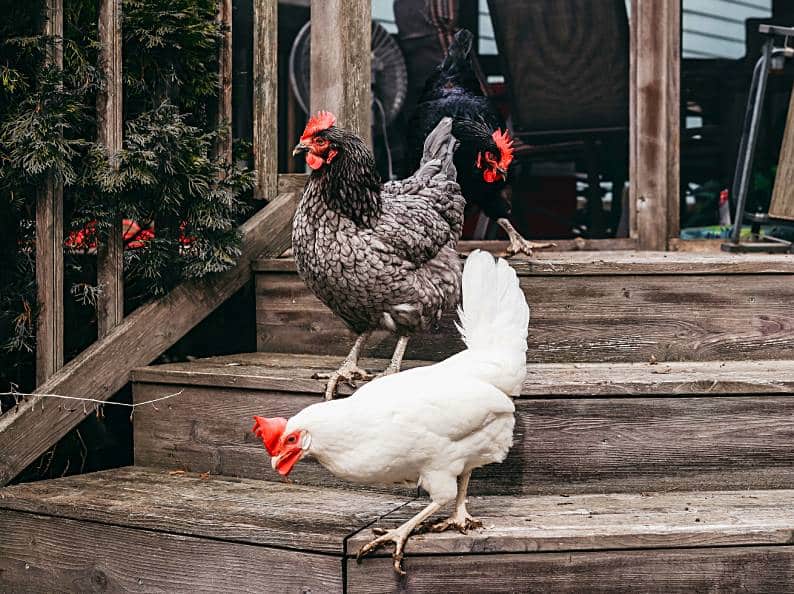words Al Woods
Homesteading has gained popularity in recent years as more people seek self-sufficiency and a simpler way of life. However, embarking on a homesteading journey without proper planning and knowledge can lead to a variety of challenges and setbacks. In this article, we will explore X common mistakes that aspiring homesteaders should avoid to increase their chances of success.
1. Lack of Planning
One of the biggest mistakes that homesteaders make is jumping into the lifestyle without thorough planning. Homesteading requires careful consideration of various factors, such as land, resources, and infrastructure. Before starting your homesteading journey, take the time to evaluate your goals and needs. Consider the size and location of the land you’ll need, the availability of water and other resources, and the necessary infrastructure for your intended activities. Proper planning will help you avoid costly mistakes down the road and set a solid foundation for your homesteading venture.
2. Overestimating Abilities
Another common mistake is taking on too much too soon. Homesteading involves various tasks, from gardening and animal care to construction and maintenance. It’s important to understand your personal limitations and seek help when needed. Start small and gradually expand your homesteading activities as you gain experience and confidence. Don’t be afraid to ask for assistance from experienced homesteaders or professionals in specific fields. Remember, homesteading is a journey, and it’s better to progress steadily than to become overwhelmed and discouraged.
3. Ignoring Climate and Local Conditions
Homesteading is highly dependent on the local climate and environmental conditions. Ignoring these factors can lead to significant challenges and setbacks. Take the time to understand the local climate patterns, including temperature ranges, rainfall, and growing seasons. This knowledge will help you choose appropriate crops and livestock, design effective irrigation systems, and make informed decisions about homesteading practices. Adapting to the local conditions will increase your chances of success and ensure the sustainability of your homestead.
4. Poor Financial Management
Successful homesteading requires effective financial planning and management. Many homesteaders underestimate the financial aspects of their venture and end up facing financial difficulties. To avoid this mistake, create a realistic budget that includes all the necessary expenses, such as land purchase or rental costs, infrastructure development, equipment, and ongoing maintenance. Explore different ways to generate income from your homestead, such as selling produce, eggs, or handmade products. Keeping track of your expenses and income will help you stay on top of your finances and make necessary adjustments along the way.
5. Ignoring Animal Care
Proper animal care is paramount if you plan to raise animals on your homestead. Neglecting the needs and welfare of your animals can lead to health issues, decreased productivity, and even legal consequences. Take the time to understand the specific requirements of each species you raise, including shelter, nutrition, and healthcare. Here are some animal specific examples:
Chickens: Provide a mobile range coop that allows for adequate space for nesting and roosting, and can be moved to different areas of your homestead. Ensure proper ventilation and protection from predators. Offer a balanced diet of commercial poultry feed supplemented with kitchen scraps, grains, and greens. Provide access to clean water and consider offering calcium supplements for egg-laying hens. Regularly check for signs of illness or parasites and seek veterinary care when necessary.
Goats: Construct a sturdy and predator-proof shelter with ample space for goats to rest and seek protection from the elements. Provide a diet consisting of good-quality hay, fresh forage, and goat-specific feed. Ensure access to clean water at all times. Regularly trim hooves and administer vaccinations and deworming treatments as recommended by a veterinarian.
Cows: Provide a spacious and well-ventilated shelter with proper drainage and bedding. Offer a balanced diet of fresh grass, hay, and grain. Ensure access to clean drinking water and mineral supplements. Regularly check for signs of illness or injury and seek veterinary care when needed. Implement a regular deworming and vaccination program.
Pigs: Construct a sturdy and secure pen or pig house that allows for adequate space for rooting, sleeping, and protection from extreme weather. Offer a balanced diet of commercial pig feed supplemented with fruits, vegetables, and forage. Provide clean water in a sturdy and spill-proof container. Regularly monitor for signs of illness or parasites and seek veterinary care when necessary.
6. Neglecting Maintenance and Infrastructure
Homesteading is a long-term commitment, and neglecting maintenance and infrastructure can have serious consequences. Regular maintenance and repairs are essential for the smooth operation of your homestead. Establish a routine for checking and maintaining your buildings, fences, machinery, and other infrastructure. Prioritize infrastructure development based on your needs and goals, ensuring that you have the necessary tools and facilities to support your homesteading activities. By investing time and effort into maintenance and infrastructure, you’ll prevent costly breakdowns and ensure the longevity of your homestead.
7. Failure to Adapt and Learn
Homesteading is a dynamic and ever-evolving lifestyle. Failing to adapt and learn from your experiences and mistakes can hinder your progress and limit your success. Stay open-minded and embrace continuous education. Attend workshops, conferences, and classes related to homesteading. Seek advice and guidance from experienced homesteaders who have faced similar challenges. Learn from their successes and failures, and be willing to adjust your practices and techniques accordingly. The more you learn and adapt, the greater your chances of building a thriving and sustainable homestead.
Takeaway
In conclusion, homesteading can be a rewarding and fulfilling lifestyle. However, avoiding common mistakes is crucial for a successful homesteading journey. Thorough planning, realistic expectations, adapting to local conditions, effective financial management, regular maintenance, continuous learning, and proper animal care are all key aspects to consider. By learning from the experiences of others and striving to avoid these common mistakes, you’ll increase your chances of creating a thriving and sustainable homestead.





